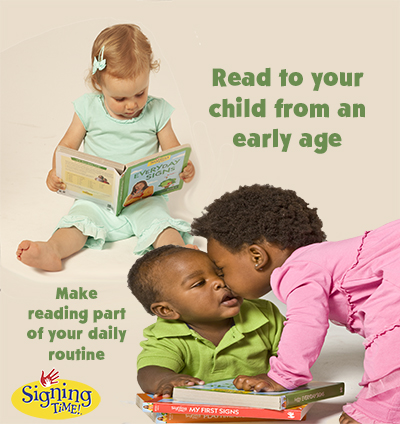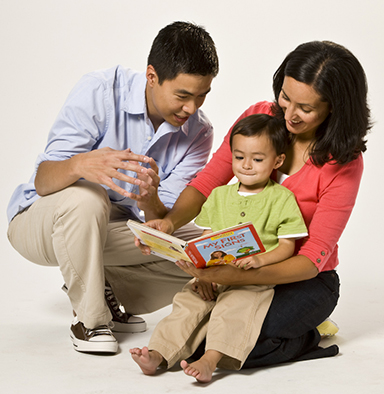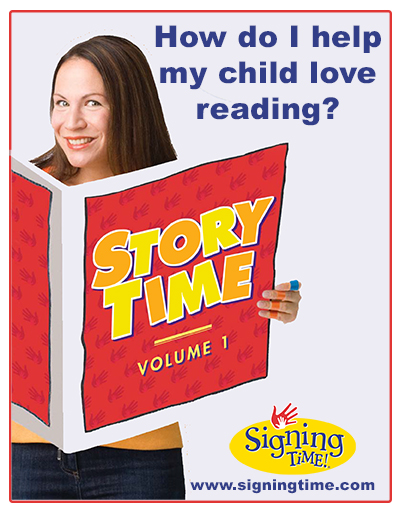Did you know October is National Book Fair Month?
In 2003, The National Book Foundation, which sponsors the annual National Book Awards, is embracing October as National Book Month as part of a national effort to raise the profile of reading in American culture. In honor of National Book Fair Month we want to help you teach your child to love reading.
Did you know that by middle school, most kids stop reading books that aren’t assigned in school. In the USA, an alarming 65 percent of fourth graders in public school were reading below the proficient level in 2015 ( Study by Annie E. Casey Foundation, citation here ).
How to help your child love reading
Read to your child from the earliest age. Make reading part of your daily routine and not just at bedtime. Expose your child to board books and cloth books that they can hold and play with. Reading supports bonding time and can be used to help transition from play to meal or bedtimes.

The Children’s Bureau states, “When you begin reading aloud to your child, it essentially provides them with background knowledge on their young world, which helps them make sense of what they see, hear, and read. In fact, many educators and researchers postulate that “It is the talk that surrounds the reading that gives it power, helping children to bridge what is in the story and their own lives,” rather than just the vocalization of the words. Introducing reading into your child’s life, and the conversations that it will prompt, helps them to make sense of their own lives, especially at a young age.”
Make regular trips to the library. The library is a cost effective way to expose your child to books and reading. If you find a book your child loves then you can purchase it for your home library. As your child gets older, let them select the books they want to hear.
Take turns reading. As your child is learning to read, let them follow along and read the words they know. As their site words and reading skills increase take turns reading a paragraph or page. This will also instill confidence in your child reading aloud.
Model reading for your child. If you love books and reading, your child will too. It is important to turn off the electronics and read. If you only read to your child and don’t take time read books you like, your child will not see the value in reading. Take time to share what you are reading, your favorite authors, or genre of books with your child. It can be fun to do family book reviews or book clubs as your child gets older.

Signing Supports Reading
Should signing be a part of reading?
Studies of the qualities of parent-child book-reading show that children gain the most from these interactions when parents actively engage them in interacting with the book. Researchers call this dialogic reading, and it involves parents asking the children open-ended questions, asking questions about the functions or attributes of the things in the book, and responding to children’s attempts to communicate about the book. A study by Laura Namy, Linda Acredolo, and Susan Goodwyn showed that the gestures that parents use during book-reading with their infants predicts the gestures the children will use. When the quality of parent-child book-reading is enhanced, children’s language skills are greater, and is especially helpful for children with limited vocabularies. Parents who use signs with their preverbal children report that their children take a great interest in books, and use signs to actively participate in book-reading with their parents.
Signing Time helps 17-month old baby learn to read
In the first week of March 2008, Signing Time learned about Elizabeth Barrett, a 17-month old baby from Lubbock, Texas, who was able to read. In an interview done by KCBD News Channel 11 in Lubbock, Texas on February 27, reporter Karin McCay said, “She looks and acts like most babies her age, but she can read sentences.” Katy Barrett, Elizabeth’s mother, said that she reads more words than they can count. According to the news broadcast, Katy is convinced that sign language contributed to her daughter’s reading skills with help from watching shows like “Signing Time” on public television.
After the Barretts appeared on the Today Show, Signing Time invited Elizabeth to be a part of Baby Signing Time 3 & 4, where she was able to demonstrate her sign language skills.
Lane Rebelo, LCSW, Certified Master Signing Time Instructor, gives the following advise about using Sign Language while reading.
Juggling a squirmy baby and a book at the same time can be a handful! So how do you use your hands to create signs as well? It’s easier than you think. Here are some tips:
- With baby on your lap, you can either hold the book with one hand or prop it on a throw pillow on the floor in front of you.
- With your arms around baby, sign in the space between your baby and the book. Some examples of good signs for this are ball and car.
- Sign right on the book. If baby is focusing on the book, move the sign to where baby is looking. Sign duck or horse right on the duck or horse on the page. Throw in your best animal sounds to make it fun.
- Let your baby feel the sign by signing it right on his body. Pat your baby’s thigh as you look at the dog in the book. Or pat your baby’s head when she notices the baby in the picture is wearing a hat. Gently rub your baby’s chest as you talk about the baby taking a bath.
- If your little one is too wriggly for the above suggestions, try placing your baby in a high chair. Place the book on the chair’s tray and sit face to face with baby. This is particularly useful for great eye contact and incorporating facial expressions into your signing and storytelling.
Researchers have found that using sign language is very beneficial for older children especially when it comes to reading.
When a child learns a letter of the alphabet they see the letter, say the letter, and sign the letter. The same for spelling a word. The child uses the sign to spell the word while saying the letters or sounds. When a child sees a word, then learns the sign for that word, it helps with sight reading. Each of these processes helps with memory retention resulting in improved language skills.
You may also be interested in Learning Sign Language to Teach Reading by Timothy E. Galpin, K-3 Special Education Teacher.
Resources:
The Importance of reading to your child Children’s Bureau
2016 Kids Count Data Book 2016
White Paper: Signing with Babies and Children Written by Dr. Claire Vallotton, Michigan State University
How to use sign language to spark your baby’s love of books By Lane Rebelo, LCSW, Certified Master Signing Time Instructor

